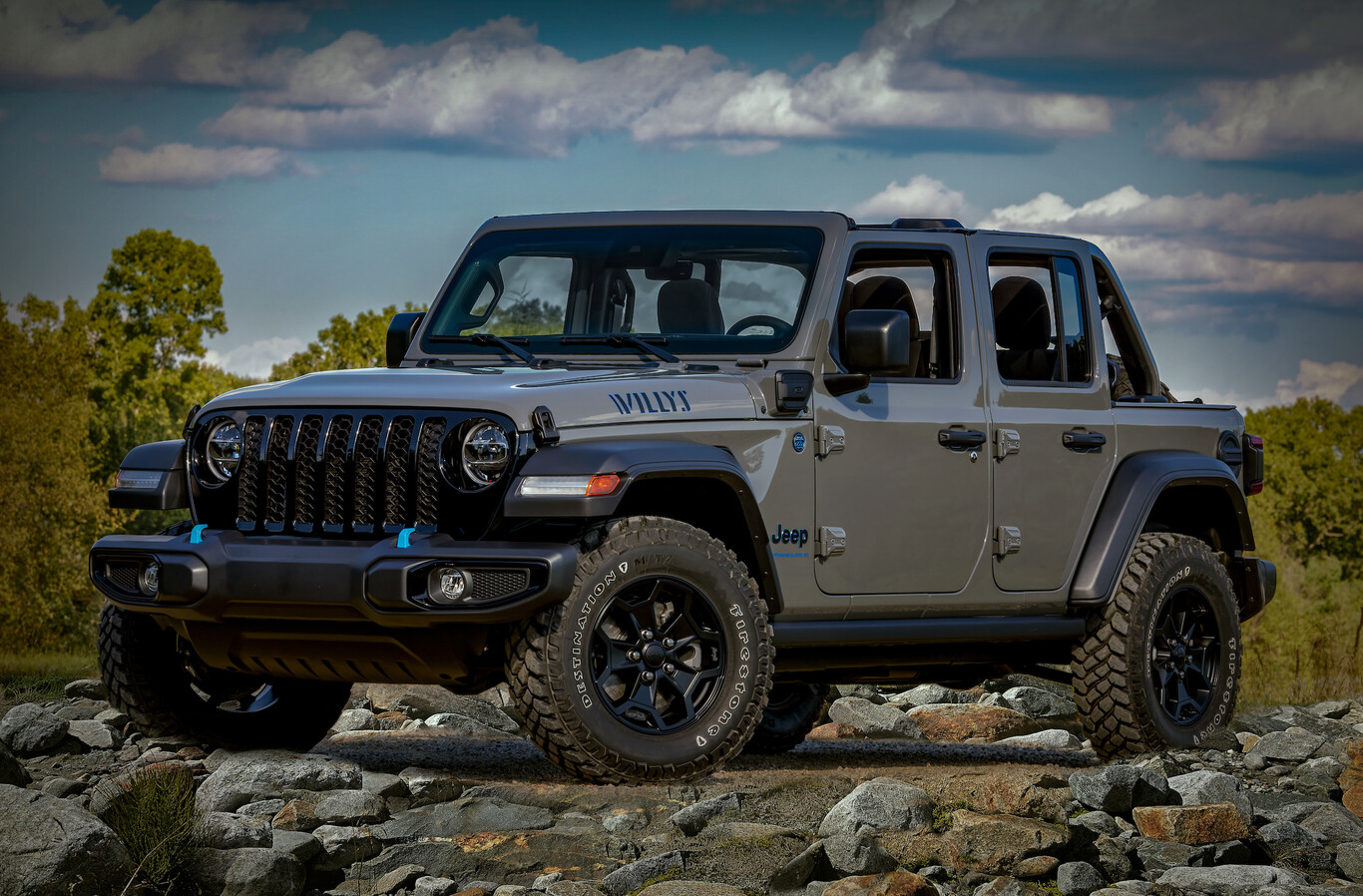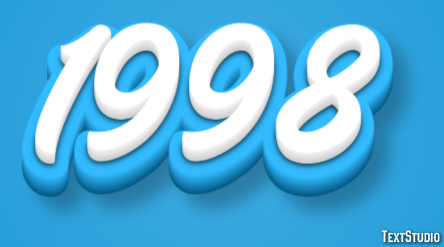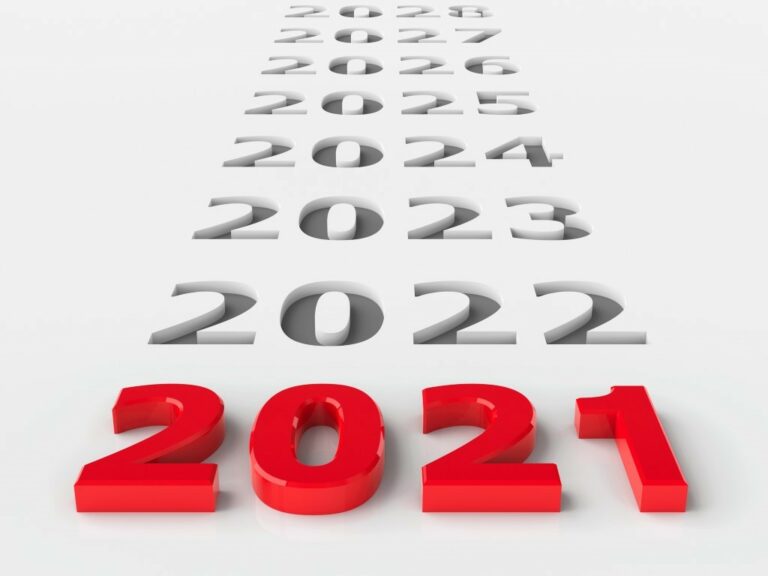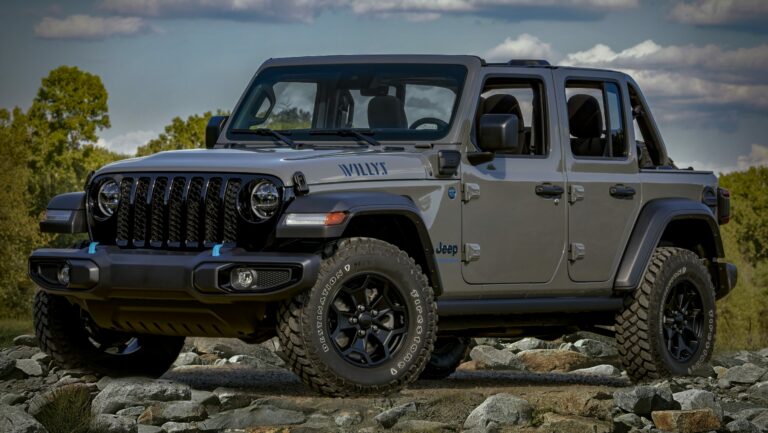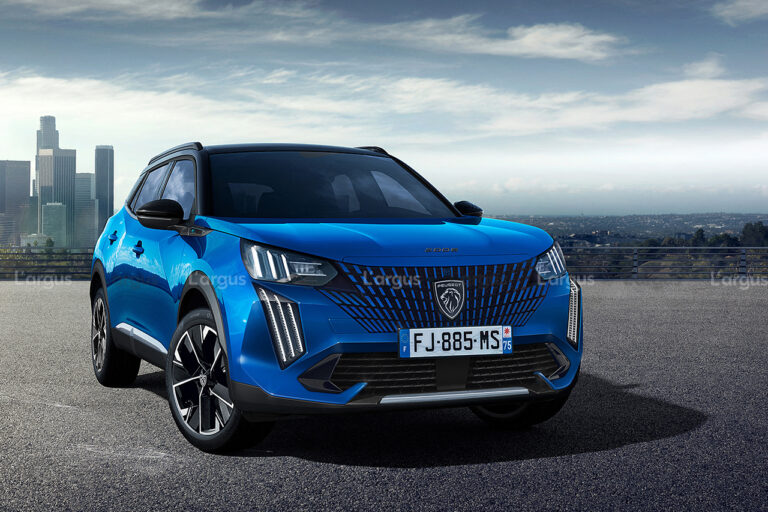Jeep CJ7 Chassis For Sale: The Foundation of Your Off-Road Dream
Jeep CJ7 Chassis For Sale: The Foundation of Your Off-Road Dream jeeps.truckstrend.com
The Jeep CJ7, an icon of American automotive history, holds a special place in the hearts of off-road enthusiasts and classic vehicle collectors alike. Known for its rugged simplicity, go-anywhere capability, and distinctive open-air design, the CJ7 remains a highly sought-after vehicle decades after its production ceased. However, time, harsh environments, and adventurous exploits often take their toll, particularly on the vehicle’s very backbone: its chassis. For many, acquiring a standalone Jeep CJ7 chassis isn’t just a purchase; it’s the critical first step in a dream restoration, a custom build, or the resurrection of a beloved classic.
This comprehensive guide delves into everything you need to know about buying a Jeep CJ7 chassis. From understanding its importance and what to look for, to navigating the various types available and crucial buying considerations, we aim to equip you with the knowledge to make an informed decision and lay the perfect foundation for your next Jeep project.
Jeep CJ7 Chassis For Sale: The Foundation of Your Off-Road Dream
Why a CJ7 Chassis? The Unsung Hero of a Legend
At its core, the chassis is the skeletal structure of any vehicle, providing the mounting points for the engine, transmission, suspension, axles, and body. For a Jeep CJ7, its ladder frame chassis is not merely a component; it’s the robust, simple, and incredibly durable platform that defines its off-road prowess.
So, why would someone seek out a standalone CJ7 chassis for sale? The reasons are diverse and often compelling:
- Rust Repair: This is perhaps the most common reason. Decades of exposure to road salt, mud, water, and general neglect can lead to severe rust, compromising the structural integrity of an original frame. Replacing the chassis offers a fresh start.
- Frame Damage: Accidents, hard off-roading, or even improper towing can bend, twist, or crack a frame beyond economical repair. A replacement chassis ensures a straight, safe foundation.
- Custom Builds and Modifications: For enthusiasts looking to build a highly customized CJ7, starting with a bare chassis allows for easier modifications. This could involve stretching the frame for a longer wheelbase, adding custom suspension mounting points (like coil-overs), or reinforcing it for extreme off-road use.
- Body Swaps: If you have a pristine CJ7 body but a compromised frame, or vice-versa, acquiring a chassis for sale enables you to mate the best available components.
- Restoration Projects: For purists, a completely rebuilt or new reproduction chassis ensures authenticity and longevity for a high-quality restoration.

Starting with a solid chassis eliminates hidden problems, saves countless hours of fabrication and repair, and ultimately results in a safer, more reliable vehicle.
What to Look For: Essential Inspection Points
Purchasing a chassis, especially a used one, is not like buying a set of tires. It requires meticulous inspection. Skipping this step can lead to significant headaches and unexpected costs down the line. Here are the critical areas to scrutinize:
![]()
- Rust, Rust, Rust! This is the single biggest enemy of any CJ7 chassis.
- Common Trouble Spots: Pay particular attention to the frame rails near the rear wheels, where mud and debris accumulate; the skid plate mounting points; the spring perches and shackle mounts; the transmission crossmember; and especially the areas around the steering box and body mounts.
- Types of Rust: Differentiate between surface rust (cosmetic, easily removed with sandblasting) and structural rust (flaking, pitting, holes, or thinning metal). Structural rust compromises integrity and requires cutting out and welding in new steel. Bring a small hammer to tap suspicious areas; a dull thud or a hole appearing indicates deep rust.

- Straightness and Alignment: A bent or twisted frame will cause endless issues with body fitment, suspension alignment, and steering.
- Visual Cues: Look down the length of the frame rails from both ends to check for obvious bends or kinks. Inspect crossmembers to ensure they are perpendicular to the main rails.
- Measurement: If possible, bring a long tape measure. Consult a CJ7 service manual for factory frame dimensions and cross-measurements to verify squareness. Even small discrepancies can lead to problems.
- Cracks: High-stress areas are prone to cracking.
- Key Areas: Examine around the steering box mount, spring hangers, shackle mounts, and any welded-on brackets. Small hairline cracks can propagate and become dangerous.
- Previous Repairs: Look closely at any signs of welding or patching.
- Quality of Welds: Are they professional, clean, and fully penetrating, or are they sloppy, porous, or merely surface welds? Poor welds are a red flag.
- Patches: Are patches properly integrated and reinforced, or just tacked on over rust? A well-done patch is acceptable; a shoddy one means more work.
- VIN and Crucial for legal ownership and registration.
- VIN Plate: Ensure the Vehicle Identification Number (VIN) stamped on the frame (typically near the steering box) is clear, legible, and matches any accompanying title or bill of sale.
- Legality: Confirm the seller has a clear title or a bill of sale that accurately describes the chassis. Some states have strict rules about registering vehicles built on replacement frames.
Types of CJ7 Chassis Available
The market for CJ7 chassis offers a range of options, each with its own pros and cons:
- Original/Used Chassis:
- Pros: Most authentic for a purist restoration, potentially the cheapest option upfront.
- Cons: Almost guaranteed to have some degree of rust, wear, or minor damage. Requires the most thorough inspection, and often significant work (sandblasting, rust repair, painting) before it’s ready. Condition varies wildly.
- Restored/Refurbished Chassis:
- Pros: Typically sandblasted down to bare metal, inspected for damage, repaired as needed, and then primed/painted. This saves you a lot of dirty, laborious work. Often comes with a guarantee from the restorer.
- Cons: Significantly higher cost than a "raw" used chassis. Quality can vary greatly between restorers, so ask for details on their process and materials used.
- Aftermarket/Reproduction Chassis:
- Pros: Brand new steel, no rust, often thicker steel than original for increased strength, superior welds, and sometimes pre-engineered for common upgrades (e.g., specific engine mounts, coil conversion mounts). You get a perfect, straight, and strong foundation.
- Cons: Most expensive option. Not "original" if absolute authenticity is your goal. May require minor adjustments for some original components to fit perfectly due to slight variations in manufacturing. Popular brands include Omix-ADA, Quadratec, and various specialized fabricators.
The Buying Process: Where and How to Find Your Chassis
Finding the right CJ7 chassis requires patience and a strategic approach:
- Online Marketplaces: Websites like Craigslist, Facebook Marketplace, eBay, and dedicated Jeep forums (e.g., JeepForum.com, Pirate4x4.com) are excellent starting points. Use specific search terms like "Jeep CJ7 frame," "CJ7 chassis," or "CJ7 rolling chassis."
- Specialty Salvage Yards/Junkyards: Yards that specialize in Jeeps or classic 4x4s are goldmines. They often have donor vehicles or stripped frames. A phone call can save you a trip.
- Restoration Shops/Fabricators: Many shops that specialize in Jeep restorations or custom builds will either have refurbished chassis for sale or can source/build one for you. They often have the expertise to ensure quality.
- Word of Mouth/Jeep Clubs: Local Jeep clubs or enthusiast groups are fantastic resources. Members often know who has what, or can provide leads. Attending local swap meets or shows can also yield results.
- Shipping Considerations: A bare chassis is large and heavy. Factor in significant shipping costs if buying remotely. Freight companies, car haulers, or even renting a flatbed trailer and picking it up yourself are options. Get shipping quotes before committing to a purchase.
Beyond the Frame: Complementary Components & Upgrades
Sometimes, a chassis will come as part of a "rolling chassis," meaning it includes axles, leaf springs, a steering box, and possibly a transfer case or transmission. While this can seem like a good deal, remember to inspect these components with the same rigor as the frame itself.
- Axles: Check for bent axle tubes, excessive rust, damaged differential covers, and play in the wheel bearings.
- Suspension: Leaf springs can be sagged or broken. Shocks are often worn out.
- Steering Box: Check for leaks, excessive play, or cracks in the housing.
- Skid Plates: Often rusted or bent.
Consider these "bonus" components as either parts that will need immediate replacement or additional items to inspect. Many builders opt to upgrade components anyway, such as heavier-duty axles (e.g., Dana 44s or Dana 60s), coil spring conversion kits, or hydraulic steering, making the condition of the original ancillary components less critical.
Potential Challenges & Solutions
Buying and utilizing a CJ7 chassis can present challenges, but most have viable solutions:
- Challenge: Discovering hidden rust/damage post-purchase.
- Solution: Thorough pre-purchase inspection is key. Budget for sandblasting and professional repair/welding.
- Challenge: Legal/Registration hurdles with a replacement chassis.
- Solution: Research your state’s laws regarding "reconstructed" or "special construction" vehicles before you buy. Keep detailed records, photos, and receipts of all work done.
- Challenge: Cost overruns.
- Solution: Be realistic with your budget. Factor in the cost of the chassis, shipping, sandblasting, paint, any necessary repairs, and potentially new components. Add a 15-20% contingency fund for unexpected issues.
- Challenge: Lack of specialized tools or skills.
- Solution: Be honest about your DIY capabilities. While many tasks are within reach for a determined enthusiast, frame repair, welding, and complex suspension setups may require professional assistance.
Price Guide for Jeep CJ7 Chassis
Prices for a Jeep CJ7 chassis can vary significantly based on condition, type (used, refurbished, new), and whether it’s a bare frame or a rolling chassis. This table provides estimated ranges:
| Chassis Type | Condition | Typical Price Range (USD) | Key Considerations |
|---|---|---|---|
| Used / "As-Is" Chassis | Heavily rusted, bent, or damaged | $300 – $800 | Likely needs extensive repair, sandblasting, and welding. Only for experienced fabricators or those willing to invest significant time/money into restoration. May not be straight. |
| Used / "As-Is" Chassis | Moderate surface rust, straight, no cracks | $800 – $1,500 | Good candidate for DIY sandblasting and paint. Minor repairs might be needed. Still requires thorough inspection. |
| Used / "As-Is" Chassis | Minimal rust, straight, solid | $1,500 – $2,500 | Rare find. May only need cleaning, minor prep, and paint. Still, inspect meticulously. |
| Restored/Refurbished | Sandblasted, repaired, primed/painted | $2,500 – $4,500 | Offers a significant head start. Quality varies by restorer. Confirm what repairs were made and the painting process. Often a smart investment for time savings. |
| Aftermarket/Reproduction | Brand new, unpainted | $3,500 – $5,500+ | Top-tier option. No rust, often stronger steel. Some come with custom options (e.g., stretched, wider). Requires painting and assembly. The most expensive but offers the best foundation. Pricing can vary by brand. |
| Rolling Chassis | Varies (used to refurbished) | $2,000 – $6,000+ | Includes axles, springs, sometimes steering. Price depends heavily on the condition of included components (are they rebuildable or scrap?). Inspect each component carefully. |
Note: These prices are estimates and can fluctuate based on market demand, location, and the specific seller. Always negotiate and factor in shipping costs.
Frequently Asked Questions (FAQ)
Q1: Can I register a vehicle built on a new or replacement chassis?
A1: This varies significantly by state/country. Most jurisdictions have provisions for "reconstructed" or "special construction" vehicles. You will typically need to retain the original VIN (if applicable and legal), provide a bill of sale for the chassis, and document all major components used. Always research your local Department of Motor Vehicles (DMV) regulations before starting your project.
Q2: What’s the average cost of a CJ7 chassis?
A2: As shown in the table above, the cost varies widely. A bare, rusty used chassis might be a few hundred dollars, while a brand-new aftermarket chassis can exceed $5,000. A good, solid used chassis that needs only sandblasting and paint might fall in the $1,000-$2,000 range.
Q3: How do I transport a chassis once I buy it?
A3: A bare chassis can be transported on a utility trailer, a flatbed trailer, or via freight shipping. Ensure it’s securely tied down. For longer distances, a professional car hauler or freight company specializing in large items is recommended.
Q4: What tools do I need for inspecting a chassis?
A4: A strong flashlight, a small hammer (for tapping rusty areas), a magnet (to detect body filler over rust), a tape measure (for checking straightness), and a camera for documentation.
Q5: Is it worth buying a rusty chassis and restoring it myself?
A5: It can be, if you have the welding skills, equipment (like a sandblaster), and a lot of patience. For severe rust, the cost of professional repair can quickly exceed the cost of a better used or new aftermarket chassis. For light surface rust, it’s a great way to save money and gain experience.
Q6: Are CJ7 and CJ5 chassis interchangeable?
A6: No, they are not directly interchangeable. The CJ7 has a 10-inch longer wheelbase (93.5 inches) than the CJ5 (83.5 inches). While some custom fabrication can make anything fit, you cannot simply swap a CJ5 body onto a CJ7 chassis or vice-versa without significant modification.
Conclusion
The Jeep CJ7 chassis is more than just a frame; it’s the very soul of an iconic vehicle, and the starting point for countless adventures and dream builds. Whether you’re embarking on a full restoration, a custom off-road rig, or simply replacing a rusted-out foundation, understanding the nuances of buying a CJ7 chassis is paramount.
By meticulously inspecting potential candidates, understanding the different types available, and planning for the journey ahead, you can confidently acquire the perfect backbone for your next project. The path to a resurrected or reimagined Jeep CJ7 begins here, and with careful selection, your off-road dream will be built on the strongest foundation possible.
